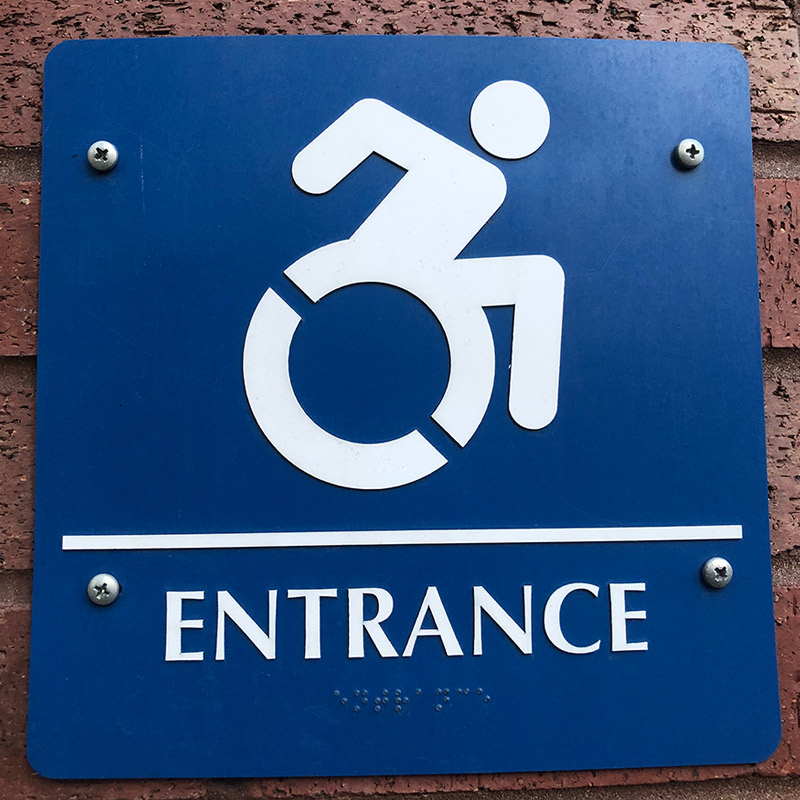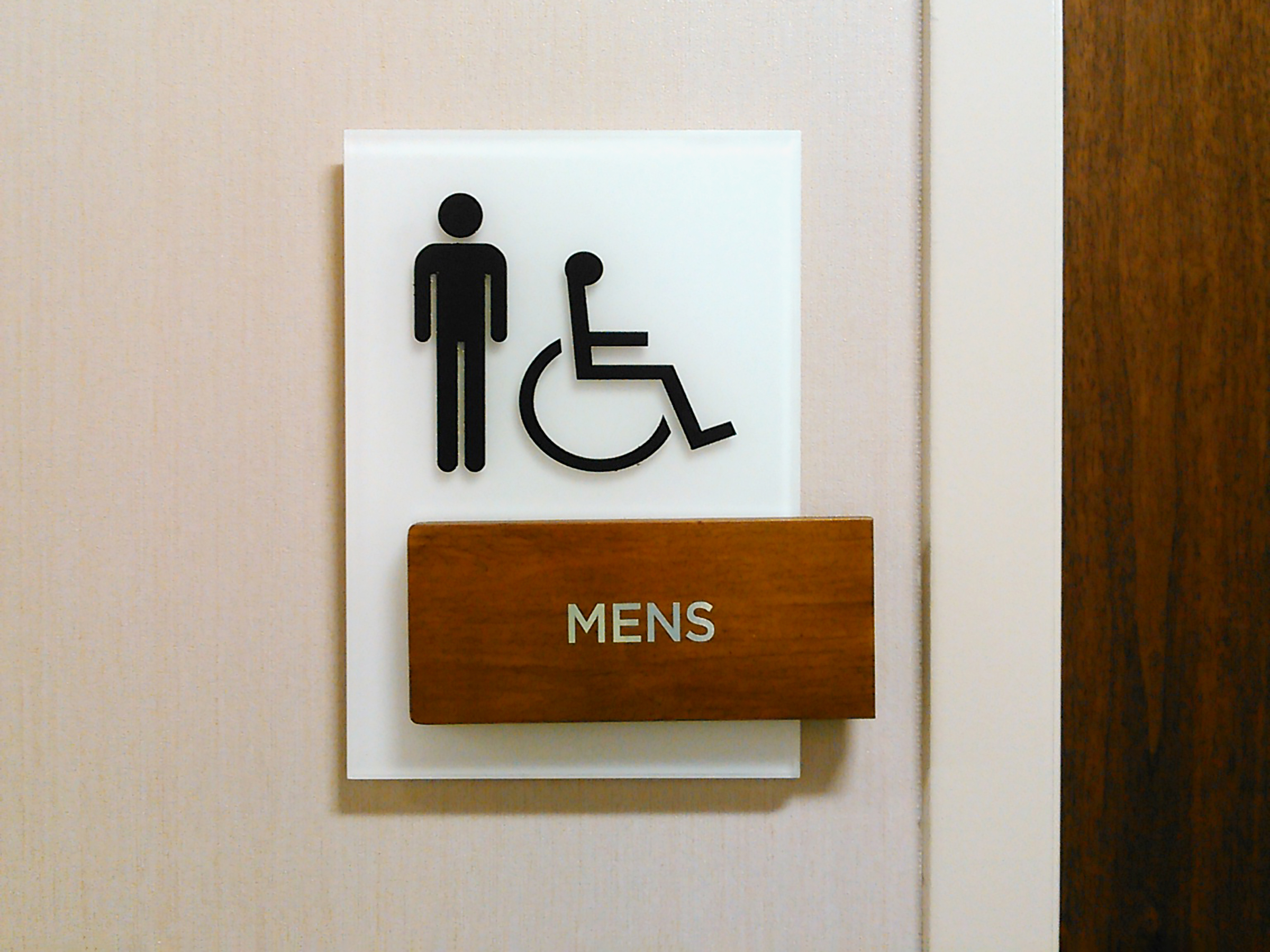Checking Out the Secret Functions of ADA Indications for Improved Availability
In the world of availability, ADA indicators act as silent yet powerful allies, guaranteeing that spaces are navigable and inclusive for individuals with impairments. By integrating Braille and tactile aspects, these indications break barriers for the visually damaged, while high-contrast color pattern and legible typefaces accommodate varied visual requirements. Their calculated placement is not arbitrary yet rather a calculated effort to facilitate smooth navigation. Yet, beyond these features lies a deeper story concerning the development of inclusivity and the continuous commitment to producing equitable rooms. What extra could these indicators represent in our pursuit of global ease of access?
Value of ADA Conformity
Making sure conformity with the Americans with Disabilities Act (ADA) is critical for promoting inclusivity and equivalent access in public rooms and workplaces. The ADA, passed in 1990, mandates that all public facilities, employers, and transport solutions suit people with specials needs, guaranteeing they take pleasure in the exact same rights and possibilities as others. Conformity with ADA standards not only satisfies legal obligations but likewise improves a company's track record by showing its commitment to variety and inclusivity.
One of the key facets of ADA conformity is the execution of accessible signs. ADA indications are developed to ensure that people with disabilities can quickly browse via structures and areas.
Furthermore, sticking to ADA policies can reduce the risk of lawful repercussions and potential penalties. Organizations that fail to follow ADA standards may encounter penalties or legal actions, which can be both economically troublesome and damaging to their public picture. Thus, ADA conformity is important to fostering an equitable setting for everybody.
Braille and Tactile Components
The incorporation of Braille and tactile aspects right into ADA signage symbolizes the concepts of access and inclusivity. It is generally positioned under the corresponding text on signage to guarantee that people can access the information without aesthetic aid.
Responsive elements prolong beyond Braille and include raised symbols and characters. These components are developed to be discernible by touch, allowing people to recognize area numbers, toilets, leaves, and other important locations. The ADA establishes certain guidelines concerning the size, spacing, and placement of these responsive components to enhance readability and guarantee consistency throughout various atmospheres.

High-Contrast Color Pattern
High-contrast shade plans play a critical role in boosting the exposure and readability of ADA signs for individuals with aesthetic disabilities. These schemes are essential as they take full advantage of the difference in light reflectance in between text and history, ensuring that indicators are quickly noticeable, even from a range. The Americans with Disabilities Act (ADA) mandates making use of details shade contrasts to accommodate those with minimal vision, making it a vital element of conformity.
The effectiveness of high-contrast shades lies in their ability to stick out in various illumination problems, including poorly lit environments and locations with glow. Normally, dark text on a light history or light this text on a dark history is utilized to achieve optimal contrast. Black message on a white or yellow history offers a stark aesthetic difference that aids in fast recognition and understanding.

Legible Fonts and Text Size
When thinking about the layout of ADA signs, the choice of readable fonts and suitable text dimension can not be overemphasized. The Americans with Disabilities Act (ADA) mandates that fonts must be sans-serif and not italic, oblique, script, very decorative, or of unusual type.
The dimension of the message additionally plays a pivotal duty in accessibility. According to ADA standards, the minimal message elevation must be 5/8 inch, and it must enhance proportionally with seeing distance. This is especially important in public rooms where signage demands to be checked out rapidly and properly. Uniformity in message dimension adds to a cohesive aesthetic experience, helping individuals in navigating settings effectively.
Furthermore, spacing in between letters and lines is indispensable to clarity. Ample spacing stops personalities from appearing crowded, boosting readability. By adhering to these criteria, designers can dramatically enhance ease of access, making certain that signage offers click for source its intended function for all people, regardless of their visual capacities.
Efficient Positioning Strategies
Strategic placement of ADA signs is essential for making the most of access and ensuring compliance with lawful criteria. Correctly located indicators guide individuals with specials needs effectively, assisting in navigating in public rooms. Key factors click this to consider consist of closeness, height, and exposure. ADA standards state that indications should be installed at an elevation between 48 to 60 inches from the ground to ensure they are within the line of sight for both standing and seated people. This typical height array is critical for inclusivity, allowing mobility device users and people of differing elevations to accessibility details easily.
Additionally, signs have to be placed surrounding to the latch side of doors to enable simple identification prior to entry. Consistency in indication placement throughout a facility enhances predictability, reducing confusion and improving general user experience.

Conclusion
ADA indications play an important function in promoting access by integrating features that resolve the demands of individuals with handicaps. Integrating Braille and responsive aspects ensures vital details is easily accessible to the visually damaged, while high-contrast shade schemes and readable sans-serif font styles enhance exposure throughout different lighting problems. Effective placement approaches, such as proper mounting heights and critical locations, even more assist in navigating. These elements collectively promote an inclusive atmosphere, underscoring the relevance of ADA conformity in ensuring equivalent accessibility for all.
In the realm of accessibility, ADA signs serve as silent yet powerful allies, making certain that spaces are navigable and comprehensive for individuals with disabilities. The ADA, established in 1990, mandates that all public facilities, employers, and transportation solutions fit people with impairments, guaranteeing they appreciate the very same rights and opportunities as others. ADA Signs. ADA signs are designed to ensure that individuals with impairments can easily browse via structures and rooms. ADA standards state that indications need to be mounted at an elevation between 48 to 60 inches from the ground to ensure they are within the line of sight for both standing and seated individuals.ADA signs play an essential role in advertising availability by incorporating functions that address the requirements of people with handicaps